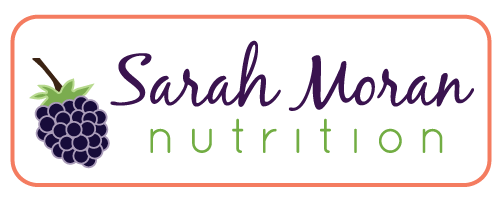NNMC Increase Produce: Make Produce the Star
/ As we finish out this week of the challenge, my last tip has to do with the way you structure your meals. In our society, meals are usually built around meat, with other food groups coming in to take a supporting role. I'm asking you to flip this on its head. Instead, focus first on the vegetables and fruits and then add in your meat or other protein option. When you do this, not only will you increase the quantity of produce in your diet, but you'll also be filling up on those fruits and veggies, which may help with weight loss, if that is your goal. For some, this might be difficult. If you're so used to thinking about your meals with only one structure, you may feel lost for how to switch it up. To ease into this idea, a likely familiar option is a stir fry. Choose a variety of veggies that you love and cook them in a pan with a little oil. Then, consider your protein option, whether it be chicken, grass-fed beef, pork, or tofu. Serve over brown rice and you've got an easy, plant-centric meal that is sure to please everyone. Another great way to get inspiration for this style of cooking is to look at websites like 101 Cookbooks and Vegetarian Times or buy a couple of vegetarian cookbooks. Resources like these will often have recipes that are chock full of produce and you can always add in a little meat if that is a deal breaker for you. However, I encourage you to step out of your comfort zone and try a vegetarian recipe now and then (come on in, the water's warm). By simply incorporating these recipes into your repertoire you'll start thinking about food in a whole new way and increase the produce in your life. So get out there and get cooking!
As we finish out this week of the challenge, my last tip has to do with the way you structure your meals. In our society, meals are usually built around meat, with other food groups coming in to take a supporting role. I'm asking you to flip this on its head. Instead, focus first on the vegetables and fruits and then add in your meat or other protein option. When you do this, not only will you increase the quantity of produce in your diet, but you'll also be filling up on those fruits and veggies, which may help with weight loss, if that is your goal. For some, this might be difficult. If you're so used to thinking about your meals with only one structure, you may feel lost for how to switch it up. To ease into this idea, a likely familiar option is a stir fry. Choose a variety of veggies that you love and cook them in a pan with a little oil. Then, consider your protein option, whether it be chicken, grass-fed beef, pork, or tofu. Serve over brown rice and you've got an easy, plant-centric meal that is sure to please everyone. Another great way to get inspiration for this style of cooking is to look at websites like 101 Cookbooks and Vegetarian Times or buy a couple of vegetarian cookbooks. Resources like these will often have recipes that are chock full of produce and you can always add in a little meat if that is a deal breaker for you. However, I encourage you to step out of your comfort zone and try a vegetarian recipe now and then (come on in, the water's warm). By simply incorporating these recipes into your repertoire you'll start thinking about food in a whole new way and increase the produce in your life. So get out there and get cooking!



 As I've mentioned
As I've mentioned 
 Slipping in more fruits and vegetables at snack time is a great way to up your produce intake. Instead of turning to options like
Slipping in more fruits and vegetables at snack time is a great way to up your produce intake. Instead of turning to options like 
 Moving into our next week of the challenge, our focus will be on increasing the fruits and vegetables in our diets. Improving your diet is so often about what you can't have, but this week is all about adding things in. When you add more produce to your diet, you will increase the water, fiber, vitamin, and mineral content. Also, eating more fruits and veggies can help with weight maintenance and weight loss as it will fill you up and help you feel satisfied, pushing out higher calorie options. This week, we will approach this goal from two different directions: adding more produce dishes to your diet as well as incorporating it into foods you may already enjoy. By doing both of these, it will be that much easier to amp up the amount of fruits and vegetables you eat every day.
If you're not a produce fan, do not fear. Remember that the way you prepare a food can make all a difference. Don't think you like broccoli? Try steaming, sauteing, roasting, serving with a tomato sauce, or blending it into a soup. Also, it can take several exposures before you can really determine if you like a food or not and, because your tastes change as you get older, foods you may have despised as a child might taste delicious to you now. You don't have to like everything, but the more you try and experiment, you might be surprised to discover your new favorite vegetable.
Moving into our next week of the challenge, our focus will be on increasing the fruits and vegetables in our diets. Improving your diet is so often about what you can't have, but this week is all about adding things in. When you add more produce to your diet, you will increase the water, fiber, vitamin, and mineral content. Also, eating more fruits and veggies can help with weight maintenance and weight loss as it will fill you up and help you feel satisfied, pushing out higher calorie options. This week, we will approach this goal from two different directions: adding more produce dishes to your diet as well as incorporating it into foods you may already enjoy. By doing both of these, it will be that much easier to amp up the amount of fruits and vegetables you eat every day.
If you're not a produce fan, do not fear. Remember that the way you prepare a food can make all a difference. Don't think you like broccoli? Try steaming, sauteing, roasting, serving with a tomato sauce, or blending it into a soup. Also, it can take several exposures before you can really determine if you like a food or not and, because your tastes change as you get older, foods you may have despised as a child might taste delicious to you now. You don't have to like everything, but the more you try and experiment, you might be surprised to discover your new favorite vegetable.